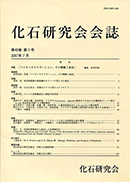Volume 40, Issue 1
Displaying 1-8 of 8 articles from this issue
- |<
- <
- 1
- >
- >|
-
2007 Volume 40 Issue 1 Pages 1
Published: 2007
Released on J-STAGE: April 30, 2025
Download PDF (870K)
-
2007 Volume 40 Issue 1 Pages 6-14
Published: 2007
Released on J-STAGE: April 30, 2025
Download PDF (942K)
-
2007 Volume 40 Issue 1 Pages 15-36
Published: 2007
Released on J-STAGE: April 30, 2025
Download PDF (5323K)
-
2007 Volume 40 Issue 1 Pages 37-44
Published: 2007
Released on J-STAGE: April 30, 2025
Download PDF (1096K) -
2007 Volume 40 Issue 1 Pages 45-47
Published: 2007
Released on J-STAGE: April 30, 2025
Download PDF (915K) -
2007 Volume 40 Issue 1 Pages 48-51
Published: 2007
Released on J-STAGE: April 30, 2025
Download PDF (1020K)
-
2007 Volume 40 Issue 1 Pages 52-62
Published: 2007
Released on J-STAGE: April 30, 2025
Download PDF (2404K) -
2007 Volume 40 Issue 1 Pages 63-79
Published: 2007
Released on J-STAGE: April 30, 2025
Download PDF (3478K)
- |<
- <
- 1
- >
- >|
